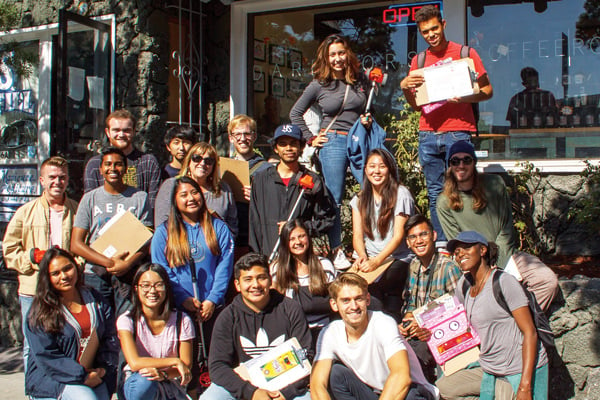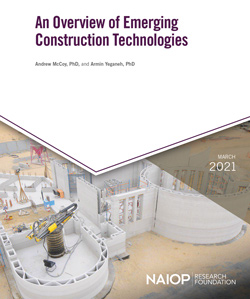Talent Development and the Future of the CRE Workforce

NAIOP Research Foundation task force takes on urgent issues.
As the talent wars escalate, commercial real estate firms of all sizes and sectors are experiencing challenges in recruiting and retaining employees. The pandemic, economic uncertainty, demographic shifts and the changing nature of work have created a unique situation for employers. Trends that are affecting CRE firms include:
Post-pandemic expectations: The pandemic profoundly upended the U.S. job market. In 2021, more than 47 million U.S. workers quit their jobs. Real estate and other professional service firms were also faced with managing remote work and implementing employee preferences for more flexibility and inclusivity. Job hopping, once considered undesirable, is now common as workers seek the most optimal work situations.
Retention during downturns: Commercial real estate firms face additional headwinds due to the cyclical nature of the markets. Payrolls grow and shrink according to the economy’s health, making it more difficult to retain talent during downturns. Rapid hiring and firing may no longer be sustainable for some firms.
Fewer workers: As baby boomers exit the workforce, there are fewer employees to take their place; this demographic imperative will worsen as childbearing plummeted during the Great Recession. Economics professor Nathan Grawe sounded the alarm in his 2018 book, “Demographics and the Demand for Education.” Grawe estimated that between 2021 and 2026, the number of college-age students will drop 15% due to the recessionary baby bust. Fewer students means a shrinking talent pipeline.
New skill sets: CRE has a reputation for slowly adopting technologies, and this may dissuade younger, digital-native workers from pursuing it as a career choice. The industry is gradually embracing proptech, AI and advanced analytics for construction management, building design and site selection. In addition to having the requisite communication and business skills, CRE leaders and their employees will need to know how emerging technology can best drive their businesses forward. However, the rate of digital transformation is outpacing the number of available experts (see “What the Talent Gap Means for Today’s Businesses,” Development, Winter 2022/2023).
Awareness: Although the number of post-secondary real estate degree programs is increasing, many young people are unaware of commercial real estate as a career path. To those not familiar with the field, real estate usually conjures working as a residential broker. Additionally, people often come into the business through family connections or by chance rather than by choice.
NAIOP Responds
In the summer of 2022, the NAIOP Research Foundation formed the Talent Development Task Force to examine how industry practitioners and educators can work together to bridge knowledge gaps between instruction and employment, improve industry access for DEI candidates and grow the talent pipeline. The task force was composed of commercial real estate professionals (brokers, investors, developers) and leaders from university real estate programs. Research Foundation Chair Skip Kalb, Mike Riopel of Northwestern Mutual and Andrew Hunt of Marquette University led the task force, which met twice virtually and once in person with a select group of CEOs and company leaders during CRE.Converge 2022 in Chicago. The meetings revealed an immediate need to strengthen the CRE workforce, create greater awareness of real estate careers among younger generations, particularly those of diverse backgrounds, and capture the perspectives of employees and employers regarding new ways of working. Based on their discussions, the task force made the following recommendations:
- The NAIOP Research Foundation should commission a study of the challenges and opportunities facing the industry around talent development, as well as recruitment and retention issues. The study should examine how practitioners can work with educators to ensure employees have the relevant skills firms need.
- NAIOP should survey its membership, including the Developing Leaders and company executives, on the relevant as well as emerging skills CRE employees will need to succeed. Survey results should be shared with NAIOP university members and other educators.
- Obtain an analysis of CRE job posting sites to discover the most in-demand skill requirements.
- Encourage the Research Foundation’s Distinguished Fellows and NAIOP university members to attend NAIOP events with students and recommend educators participate in conference panel sessions and Forum presentations. This strategy will lead to more significant interaction among practitioners and students while reinforcing opportunities within the field. NAIOP chapters should also engage with local educators on a consistent basis.
NAIOP will continue leveraging its relationships with educators and local chapters as well as its programmatic efforts in DEI, career development, online courses and scholarship support to create greater recognition of CRE as a career path.
As demographic shifts and trends continue to shape commercial real estate and its workforce, companies must develop robust talent strategies that accommodate evolving needs and shortages. To this end, partnerships between the industry and educators are critical — they form essential channels of communication and cooperation that help each adapt and build the talent pipeline.
Jennifer LeFurgy, Ph.D., is the editor in chief of Development magazine.

Students in UC San Diego’s B.S. in Real Estate and Development program.
Expanding the Pipeline
In a feature article in the Winter 2021/2022 issue of Development magazine, Shawn Moura, Ph.D., NAIOP’s research director, examined diversity initiatives in university-level commercial real estate programs. According to Moura, “increasing the diversity of undergraduate and graduate real estate programs can be a particularly effective way to increase the diversity of the commercial real estate industry.”
 Relevant ResearchIn March 2021, the NAIOP Research Foundation published “An Overview of Emerging Construction Technologies.” The report explores emerging construction technologies and their implications for the construction and real estate development industries. To view and download the report, visit: www.naiop.org/research-and-publications/research-reports/reports/an-overview-of-emerging-construction-technologies/ |







